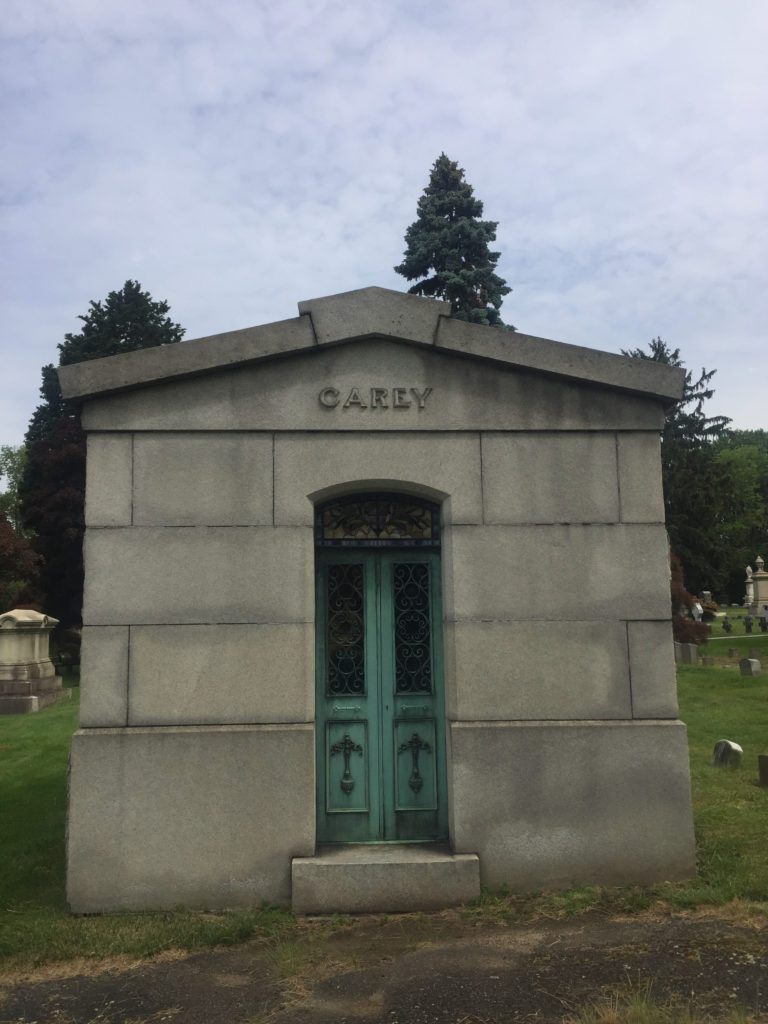Erik Visits an American Grave, Part 891
This is the grave of Harry Carey, Sr.

Born in 1878 in The Bronx, Carey grew up in an elite family. His father was a highly respected lawyer who eventually served on the New York Supreme Court. Carey was something of a roustabout. He was a smart guy–going to college at NYU. But he also was not interested in following his father’s respectable and staid career. He was in love with the American West, like other elite easterners such as Theodore Roosevelt and George Bird Grinnell. Like TR, Carey went west to play as a cowboy. Not that he had TR level money and so he was a working cowboy. But still, he certainly chose that job in a way that most cowboys, who came from poor backgrounds, did not. He worked as a railroad superintendent for a time too. He also enjoyed writing, especially westerns. This was the beginning of the western phase in American culture. Immediately after the white conquest of the region, the nation went into a huge romanticizing of the process of conquest, from wanting to see Native Americans at fairs and the like to Buffalo Bill Wild’s West Show to popular novels such as Owen Wister’s The Virginian, which is in fact a terrible book.
Carey was in a boating accident and got pneumonia in the aftermath. Convalescing, he wrote a play called Montana. It became a big hit, enough so that he spent the next three touring the nation putting it on. Better than working in the West was working about the West. A career in western entertainments was born. He made friends with Henry Walthall, best known for being the KKK Confederate hero in Birth of a Nation. In 1911, Walthall introduced Carey to D.W. Griffith, already the best director in Hollywood. Griffith started casting Carey in his films. He had already played in a few films before this, going back to 1908. Carey became a big western star, for Griffith and for other directors. His biggest success at this time was in the Cheyenne Harry films, a series (serials were common in the silent era) about an outlaw with a heart of gold. He played this role in various films from 1916 all the way to 1936. He also got to working with a young director who saw Griffith as a mentor, and also had Griffith’s vision of white dominance over America–John Ford. Carey starred in Ford’s first film, 1917’s Straight Shooting. That began another long collaboration. Carey was never the big film star himself (neither was his son for that matter). But he became the solid character actor needed as a sidekick or bad guy or foil to the big western hero. And in case you want to know what silent film work was like, Carey appeared in 55 films–in 1913.
Carey had a deep and resonant voice and transitioned just fine to talkies. He played Hawkeye in the 1932 adaptation of Last of the Mohicans. Later in his career, an aging Carey moved away from the westerns that he wasn’t really fit enough to perform anymore. Known for doing his own stunts, that obviously gets harder in your 50s and 60s. So he took roles as character actors in a number of non-western films. That included his Best Supporting Actor nomination for Mr. Smith Goes to Washington, a film that has done tremendous damage to American political culture due to its lauding of the filibuster as the ultimate bulwark of democracy against majority rule. Ugh. Anyway, it’s not Carey’s fault. He played the president of the Senate in the film. He didn’t win, but it was still a big honor. Howard Hawks also started using him quite a bit, including in the war film Air Force, from 1943, and most notably, as the cattle buyer in Red River, one of the finest westerns made. That was his next to last film. His final appearance was in the Disney film So Dear to My Heart, which was released in 1948, after his death.
Carey died in 1947. He was 69 years old. Word came out that it was became of a spider bite from a black widow. This is almost certainly not true. He smoked himself into the ground, as did so many people in that era.
Harry’s son and namesake had almost the same career as his father, as a supporting player in westerns, especially many of the classic John Ford-John Wayne films.
Harry Carey is buried in Woodlawn Cemetery, The Bronx, New York.
If you would like this series to visit other Oscar nominees in 1940, you can donate to cover the required expenses here. All the other Best Supporting Actor nominees were cremated except for Claude Rains, who I’ve already visited. As for Best Supporting Actress, the winner, Hattie McDaniel in Gone with the Wind (god this is a complicated one here), is in Los Angeles and Geraldine Fitzgerald, nominated for her work in Wuthering Heights, happens to be in the same cemetery as Carey. It is a huge cemetery after all. Previous posts in this series are archived here.


